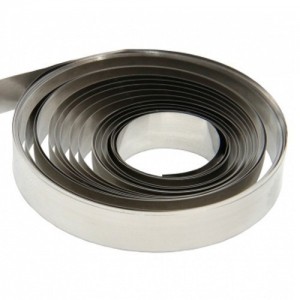Stainless Steel Grade
-

309 Stainless Steel Strip
Order the 309 stainless steel coil for its outstanding corrosion resistance and suitability for high-temperature applications. Alloy 309 (UNS S30900) is an austenitic stainless steel specifically engineered to endure high-temperature environments, making it an excellent choice for both thermal and electrical applications.
-

430 Stainless Steel Strip
430 stainless steel strip is a thin, flat piece meticulously crafted from durable 430 stainless steel. As part of the ferritic stainless steel family, 430 offers outstanding characteristics. These strips are magnetic and can be easily drawn and formed, making them highly versatile.
-

305 Stainless Steel Strip
As a leading supplier in China, we specialize in providing high-quality 305 stainless steel coils and strips, renowned for their excellent formability and deep drawing capabilities. Perfect for manufacturing intricate shapes and components such as expanded metal parts and small diameter deep containers, our 305 stainless steel is designed to meet the diverse requirements of various industries.
-

304 Stainless Steel Strip
304 Stainless Spring Steel Strip is a type of stainless steel strip specifically engineered for spring applications. Known for its good corrosion resistance, it is suitable for use in various environments. This stainless steel strip showcases excellent spring properties, including good elasticity, high resilience, and the ability to return to its original shape after deformation.
-

321 Stainless Steel Strip
321 stainless steel, an improved iteration of 304, integrates Titanium to resist severe corrosion. It is ideally suited for applications in temperatures spanning from 430℃ to 900℃.
-

410 Stainless Steel Strip
Grade 410 is a martensitic stainless steel known for its good corrosion resistance, high strength, and hardness. It remains magnetic in both its annealed and hardened states. Various heat treatments can yield a broad range of properties. This alloy is ideal for applications that require moderate corrosion resistance along with high mechanical properties.
-

204 Stainless Steel Strip
204 Stainless Steel Strip: SS 204 is an austenitic chromium-manganese stainless steel that contains 2-4% copper and 0.05-0.25% nitrogen. The addition of copper enhances its ductility compared to 201 and 304 stainless steels. In specific environments, copper also improves resistance to corrosion and stress corrosion cracking. SS 204 bridges the cost-property gap between the 200 and 300 series stainless steels, offering a balanced combination of affordability and performance.
-

439 Stainless Steel Strip
439 Stainless Steel is an 18% chromium, titanium-stabilized ferritic stainless steel that offers corrosion resistance comparable to 304 stainless steel. This grade combines the advantages of both chromium and titanium, resulting in improved weldability and exceptional resistance to stress corrosion cracking.
-

440 Stainless Steel Strip
440 stainless steel is a high-carbon, martensitic stainless steel recognized for its exceptional strength, hardness, and wear resistance. It is commonly used in applications that demand good corrosion resistance and high durability, such as cutting tools, bearings, and surgical instruments. This steel can be heat treated to achieve various hardness levels, making it versatile for a wide range of industrial uses.
-

904L Stainless Steel Strip
904L stainless steel strip is a low carbon, unstabilized austenitic stainless steel. This highly alloyed material includes copper to enhance its resistance to strong reducing acids, such as sulfuric acid. Additionally, 904L stainless steel is resistant to stress corrosion cracking and crevice corrosion. It is non-magnetic and provides excellent ductility, strength, and weldability.











